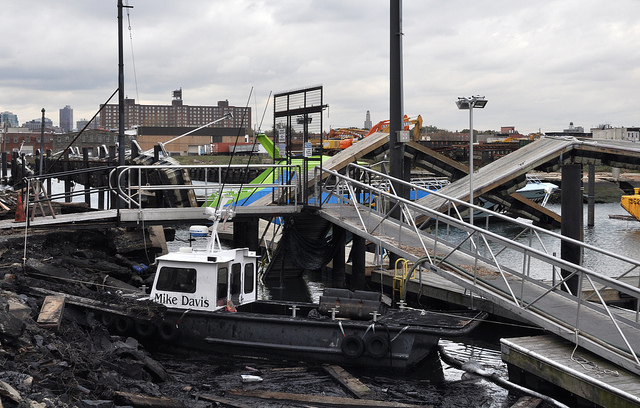
Most people don't think chocolate factories or hardware stores have much to do with climate change. Yet residents of Queens, New York have discovered that extreme weather can devastate local businesses. Hurricane Sandy swamped the Madelaine Chocolate Company, for instance, and two months later, owners were still clearing out mud and suspending pay for 450 employees. A nearby hardware store won't reopen until February and other businesses don't know if they will reopen at all.
Neighborhood residents are left reeling. "It's like anyone who didn't lose his home lost his job," Juan Colon told the New York Times.
When I first started working on climate change a decade ago, we spoke in terms of distant forecasts and long-range impacts. Now we simply look out the window to see what climate change can do to our communities. As demonstrated by the drought that gripped more than half the nation last summer or the intense storms that pummeled towns from Duluth to Queens, climate change is upending lives and costing billions of dollars.
We no longer have the luxury of time. We must act now to prevent more Americans from feeling the pain of lost jobs, destroyed homes and shuttered businesses.
That is why NRDC and 68 other civic, healthcare, labor, and environmental groups are calling on President Obama to use his second term to take bold and decisive action on climate change.
This week we sent a letter outlining the top three things the president can do to defuse the climate threat. Right now. Using existing authority. And without movement in Congress.
First, we urge President Obama to elevate the issue of climate change in the public discourse. As my colleague Dan Lashof explains on his blog, the way the president talks about climate change has the ability to rally public support and build political will for climate solutions.
Hurricane Sandy debris in Red Hook, Brooklyn. Photo Credit: Sunset Parkerpix.
Second, we urge President Obama to use the Environmental Protection Agency's existing authority to limit carbon pollution from existing power plants -- our nation's largest source of global warming pollution. NRDC has proposed a flexible, cost-effective plan for how the EPA can set standards that will reduce carbon pollution by 34 percent by 2026 compared to 2005 levels and generate between $25 and $60 billion in benefits by 2020.
Third, we urge President Obama to reject the use of the dirtiest fuels. Producing tar sands oil, for instance, generates three times as much greenhouse gas emissions as conventional crude -- and that's even before we burn it in cars and trucks. As my colleague Susan Casey-Lefkowitz writes in her latest post, we can't rely on dirty tar sands oil without threatening our health and communities. That's why the president must reject the Keystone XL tar sands pipeline.
These three steps put America on a path toward climate stability. They will shield more Americans from devastating drought, heat waves and storms. And they will unleash more investment in clean energy resources that generate jobs and make our air safer to breathe.
But we have to act now to reap the most benefits, because climate change isn't waiting. According to a NOAA report released on Tuesday, 2012 was the hottest year on record for the continental United States. Our climate is mutating before our eyes, and we must arrest its destructive changes.
President Obama recognizes this reality. He has already acted to cut carbon pollution from cars and new power plants and he recently said he would make climate change a top priority for his new term. He can begin by taking these three steps.
